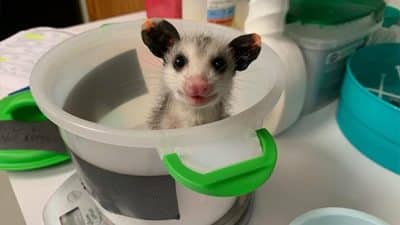
Peterson is no rookie to the world of robot fighting. In the early 2000s, a version of the show appeared on the cable network Comedy Central, where it ran for three seasons ending in early 2003. The show inspired the then-high school student to start building. By the time he was in college the show was over, but the competitions remained; and in 2005 Peterson was a battlebot fighting champion.
With the show making a comeback to television last summer and being a huge hit, drawing more than 5 million viewers per episode, some of Peterson’s old contacts in the bot-battling world encouraged him to apply to appear, which he did around Thanksgiving of 2015.
“We heard back from the show in January for a competition in April, so we hardly had any time to design and build a bot from scratch,” Peterson said. “As it was such a short time scale, I reached out to some college classmates from Penn State who were on the Formula SAE team with me to help.”
His college buddies were skeptical, having never been involved in bot-fighting before. “There was some hesitation, for sure. They had built race cars but nothing like this.”
To get the team on board Peterson knew he had to design something that would excite them. For a month he spent all his free time designing a brand new fighting bot. When he showed the sketches and designs to his soon-to-be team and they sat down to watch last year’s show episodes, they were hooked.
His team, Alex Pardo, Josh Kramer, and brothers Dan and Phil Reist, live in Pennsylvania, New York, and Ohio, so Peterson traveled north on the weekends and during free time to help and oversee the build. The team brought assets other than their engineering skills. The Reist’s family business is Reist Precision Machine Company, and the brothers own Yokeiseasy Bicycle Co., where they hand-build mountain bikes out of steel and titanium. Peterson also received sponsorship fromTitanium Joe, a Canadian company that had sponsored his 2005 champion bot.
“We did a lot of our work in Pittsburgh at TechShop, a community machine shop, and during our build we met students from The Brainstem Robotics Team, which is made up of students from a number of high schools in the Pittsburgh area,” Peterson said. “They were so enthusiastic so we asked them to help us out. Much of the distinctive look of Ultraviolent is because of 350 LED lights the robotics team helped us with.”
While Ultraviolent garners attention for its unique look, it also had to be ready to fight and the lights, while giving it a signature look, aren’t merely aesthetic. They provide feedback for the driver, telling him when the bot is in range to use its weapons and when there is a malfunction or damage. Ultraviolent features three weapons: A spring-powered launching arm designed to get under an opponent; two forks on either side of the bot to dig under the front armor of an opponent; and two side grappling arms to drag the opponent across the fighting space – where saws, mallets, and other weapons lurk in the floors.
The competition started with 56 teams and their 250-pound bots. Twelve teams fought a play-in round for four spaces. The 48 remaining fought in a bracket and the 24 winners plus eight losers, chosen by the judges and the production company, remained for the 32-bot single-elimination bracket.
“All the bots were ranked in the round of 32,” Peterson explained. “The ranks were based on robot types or human interest angles of the teams.”
Peterson can’t say what round(s) Ultraviolent took part in or how they fared. But he did say the team’s first opponent was a championship team from Wisconsin who had won during the original run of the show in 2002, and were one of the tournament favorites.
“The Wisconsin bot had three 40-pound spinning hammers as a main weapon,” Peterson said. “They were driven by a 32-horsepower motor and were swinging at something like 200 miles per hour. The key to being able to win that fight was stopping those hammers.”
How did they do it?
Peterson doesn’t even blink. He’s not telling whether they did or not. A preview episode for the show aired May 10 and the show starts its run June 23. To find out if Ultraviolent is ultra-competitive in the main event, we’ll all have to wait and see.










